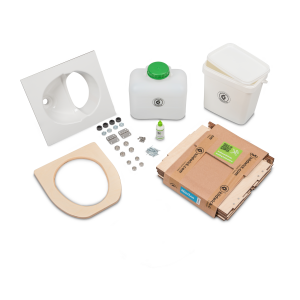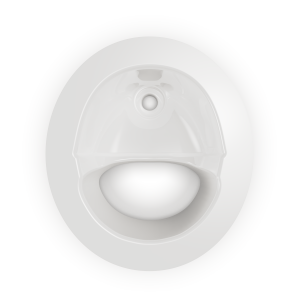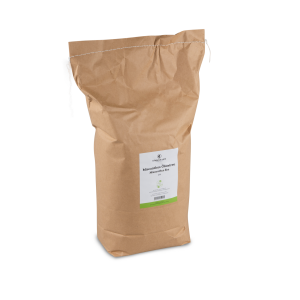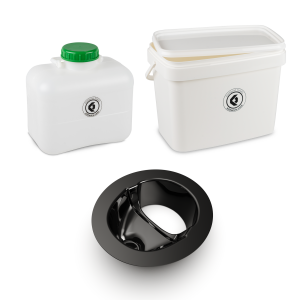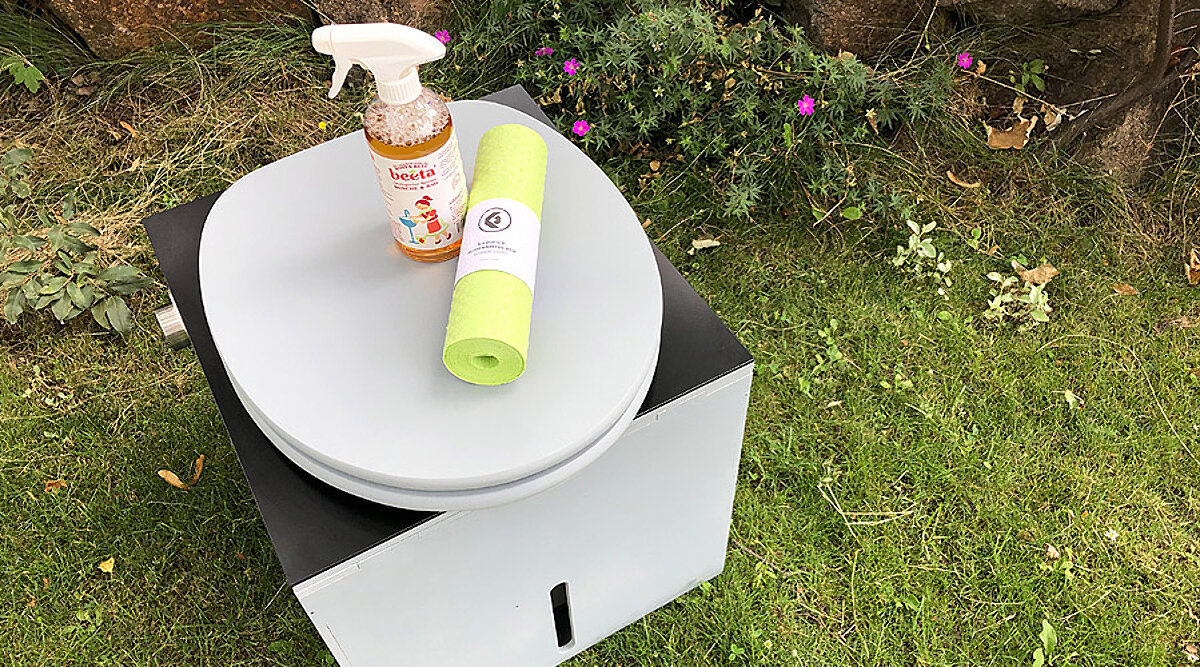
Let´s go!
In this post we will explain step by step how to properly clean and maintain your Kildwick dry composting toilet, how to properly empty and prepare the solid tank and the urine tank.
Before you can put your Kildwick toilet into operation, you should set up the solid tank. Here, the choice of your bag already plays an important role. If you decide on a compostable paper bag, we recommend that you use a biodegradable organic waste bag made of corn starch as a base in the container in case the paper bag does not keep 100% moisture or tear. Even if you've decided on the corn starch bag, a double bag is a useful safety measure that can save you from having to completely clean the canister.
After you put both bags in the container, put 2 to 3 hands of miscanthus litter into the solids container as a base - and it is ready to use. The urine tank can be used without any preparation.
Let’s move on!
Let us now concentrate on emptying the urine tank. If possible, you should empty the tank daily, but this is not a “must do” and of course depends on the number of uses. Urine can start to smell after about 4 to 5 days.
If you have removed the drain hose from the urine container, screw the lid onto the urine canister, take the tank and shake it briefly but vigorously. This ensures that the suspended matter contained in the urine, which have sunk to the bottom, dissolve and are flushed out when emptying. These particulates can form an unsightly film on the canister floor over an extended period of time. Therefore, we recommend rinsing after emptying. To do this, simply fill the tank one-third with water and add some organic beetroot cleaner. Turn the lid back onto the screw cap and then shake the contents vigorously. This helps prevent sediment from forming. Now just empty the tank.
Afterwards the urine tank is ready for use again.
You can also wipe the drain hose with a little water, a cloth and our biodegradable natural cleaner.
The urine tank should be emptied either in a water toilet or a sink. You can also ask your local community for a municipal collection site, where both urine and faecal matter can usually be disposed of. Please always pay attention to hygiene when emptying.
Of course, the urine can be used as liquid fertilizer in your garden. For this we recommend that you read our blog post on urine composting. Only in absolute exceptional or emergency cases should you dispose of the urine directly in nature. Please make sure that urine doesn’t come into contact with useful or consumable plants and is not poured into nature near a watercourse (river, stream, brooks). Please note that the disposal of urine or faeces in lakes, rivers and direct discharge into the sea is punishable by law.
The solid container for faeces should be emptied at the latest when it is filled to three quarters.
To do this, simply remove the filled bag, close it as tightly as possible and dispose of it in the household waste, unless you want to compost it. Of course, it can always happen that none of the mentioned optimal disposal options are available to you. If you use biodegradable bags and you have really kept to the rules, which are important for the use of the solid container, then you can bury the bag deep in the ground in very exceptional cases. Always remember that this should happen only in cases of emergency. Of course, you can store the solids in another bag until you have a proper disposal option available.
You should also clean the solids container at regular intervals (with water und organic beetroot cleaner), even if there are no visible soiling. Exact instructions for initial attachment of the faecal container can be found in the first paragraph of this article.
Further important tips and information about dry composting toilets can be found in our FAQ.
